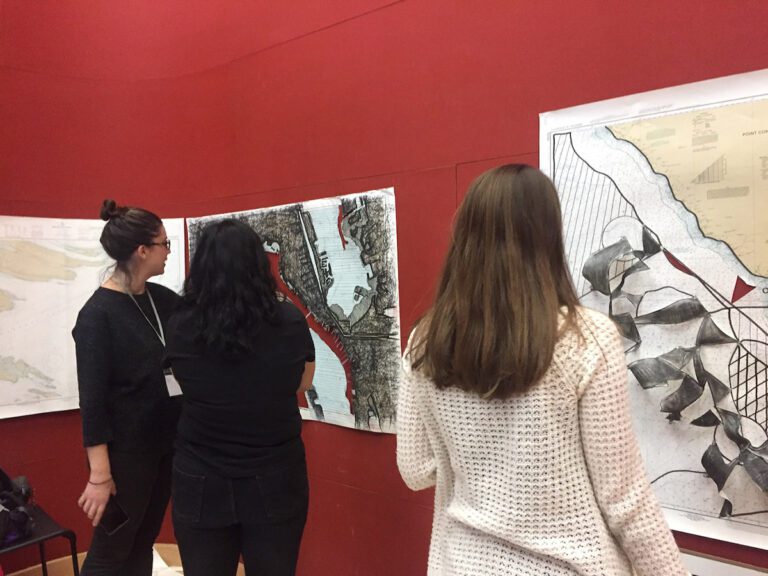One of the most powerful teaching methods for boosting student comprehension is the 1-on-1 conference. Conferencing is not when you circulate throughout the room and check in with students. 1-on-1 conferencing gives each student personal face time with you in a designated space in the classroom. Conferencing is one way to promote and develop relationships and gather important and specific data.
1-on-1 conferencing works during formative and summative stages of the educational process. Today we’ll examine three different 1-on-1 conferences, illustrate the data acquired, and reveal some critical steps for successful implementation.
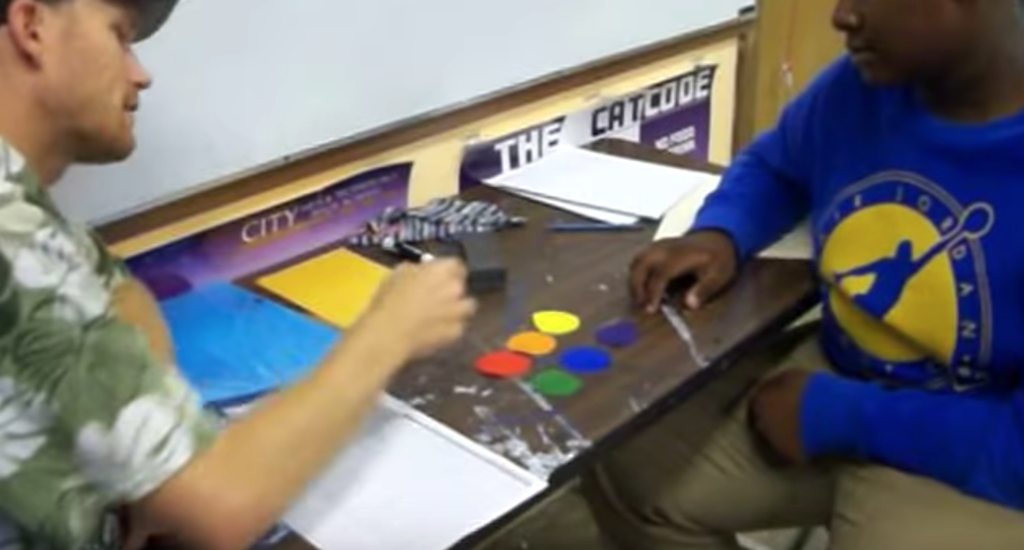
Setting the Stage for Conferencing
When introducing the idea of 1-on-1 conferencing, it helps to let students know what is going on. Help students understand that conferencing is not about being in trouble or trying to embarrass them. Conferencing means a quick conversation to see which areas need to be readdressed to ensure everyone’s success. It is also helpful to start by asking for volunteers and making a list on the board so students can anticipate when it is their turn. Giving it a fun name can help too. In my room, I use “Chat with Matt.”
The location is also important. As the leader of the class, you definitely want to keep eyes on the room while conferencing. At the same time, you want to have students come to you in a place that keeps the conversation private. It is best for conferencing to be in a designated area away from their daily seat. When students come to you, they need to have your complete and undivided attention. Conferencing is a sacred space between student and educator.
Formative Assessment Conferencing
Conferencing with students early on in a lesson or unit is essential. You can help coach students to grasp new concepts and record data to help identify which students need additional support. Using a class roster spreadsheet, you can take quick notes that identify which students have had a conference and what content each student still needs help with.
The following images are of a conference during the second week of school. It was immediately after introducing the basics of color theory, and students were working on applying those concepts into scaffolding assignments. In this conference with the student, I am asking these same questions to every student and recording information:
- Can you arrange the 6-color wheel in order?
- Can you show me the warm colors? Cool colors?
- Can you match up the complementary colors?
- What are the neutral colors?
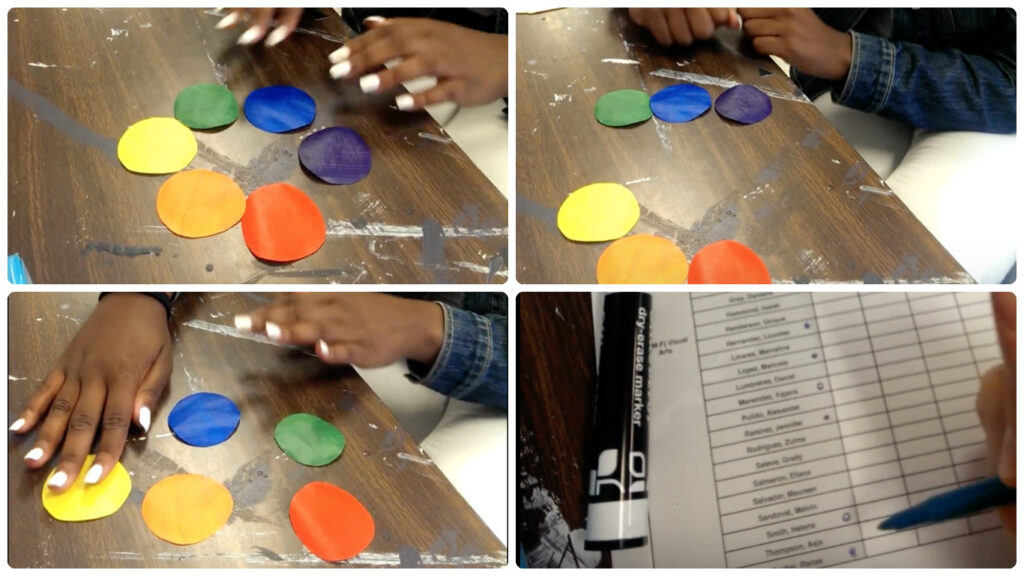
Cycling Back For Additional Formative Support
When assessing student learning, creating a system to track data is paramount. Once the whole class has been cycled through, there will usually be some students who need additional support. The following images show 1-on-1 conferencing about four weeks into the school year. Students were expected to identify five artistic conventions they could apply to their projects.
Using the data from my previous conferencing, I called back students who needed some extra time internalizing the content they were expected to know. The first time through, these students correctly identified two of the following five conventions: complementary colors, warm/cool/neutral colors, value shift, overlap, and perspective. By the second conference, they were able to name all five.
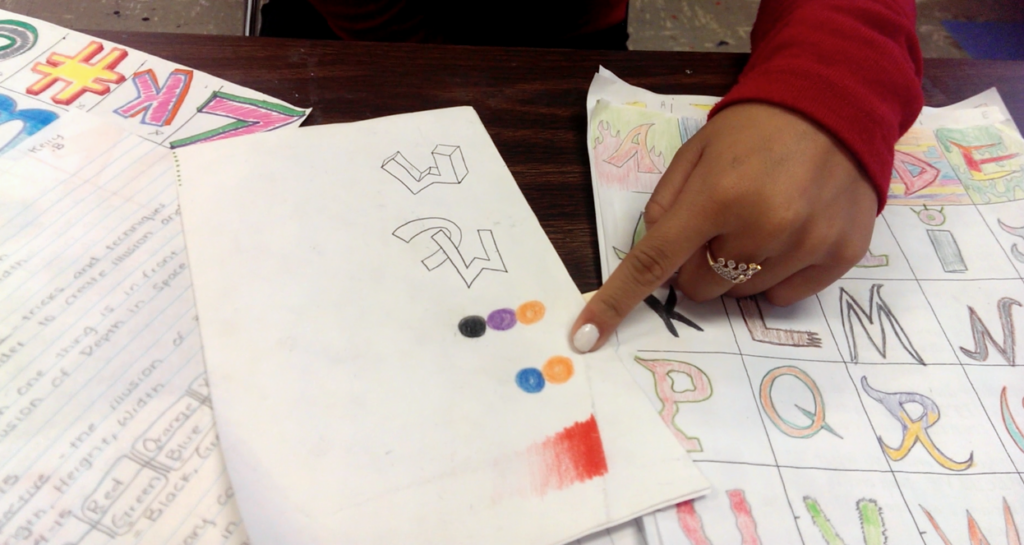
Summative Assessment Conferencing
Conferencing can be a powerful way for students to reflect on their work and negotiate final grades on assignments. In this next conference, the student used the assignment rubric to assess her completed work. After the self-assessment, she had a 1-on-1 conference in order to explain her reasoning and learning.
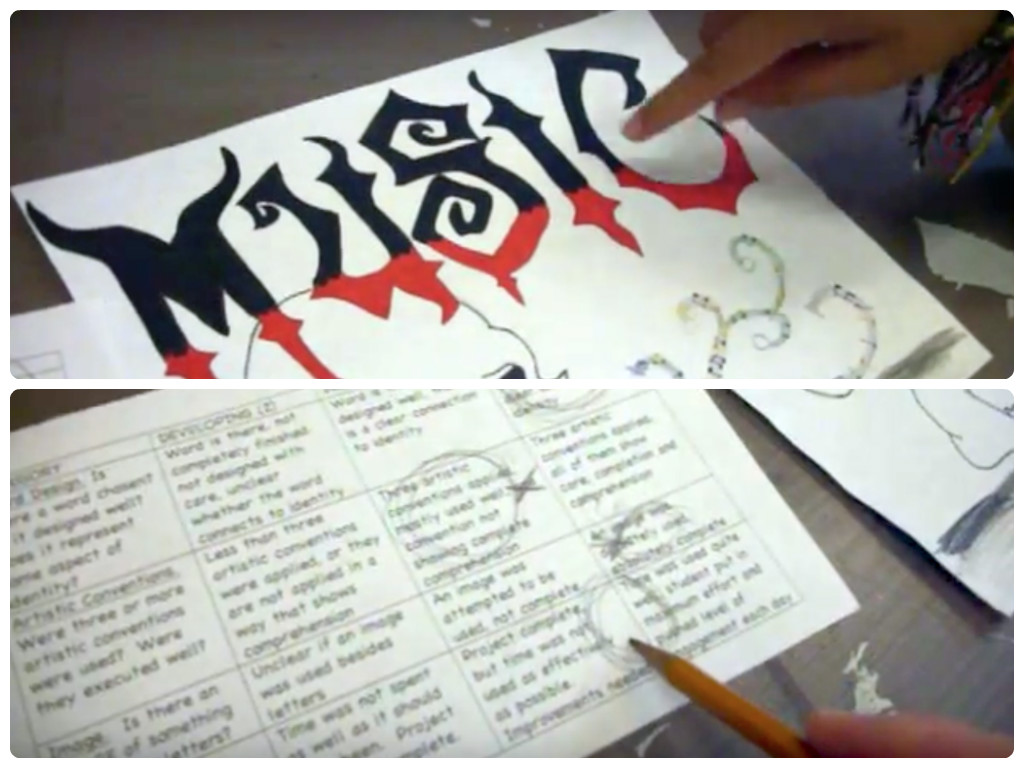
The 1-on-1 conference in this video happened about six weeks into the school year. Students were asked to apply three out of five artistic conventions and a symbolic image in an art piece. The assignment is leading up to the final project of the unit, so the data gathered is essential before beginning that work. After assessing her latest art piece, the student also gives information about her next assignment ideas. The assessment is collaborative while the feedback is personal and discussed in the moment. As an educator, all “grading” is being done during class time as well, saving later prep time for other tasks.
Keys for Successful Conferencing
For those new to the realm of 1-on-1 conferencing, there can be feelings of hesitation and doubt. Questions might arise like, “How long should I spend with each student? Are you telling me that students are expected to work even though I am having side conversations one at a time? What about classroom management?” Here some ways to ensure conferencing success.
1. Develop the Culture of Independent Work
Ultimately, we all strive to create an environment where students are self-sufficient and do not need an adult standing over them to engage in work. One way to manifest this is by continually redirecting student questions. When a student needs help or is asking content questions, redirect them to the class. Ask the entire room for answers to questions, or tell the students to ask each other for help and answers. Sometimes I declare four or five students as “resident experts” while I am conferencing, and students go directly to the “experts” for help.
2. Begin Immediately and Develop Conferencing Culture
The earlier in the school year 1-on-1 conferencing begins, the more of a norm it becomes. Try to hold your first conferences in week number two, and strive for conferences every two or three weeks afterward for the first quarter. Not only does this develop the independent learning culture in the room, it also helps you get to know individual students and their needs rapidly.
3. Structure and Timing
The 1-on-1 conference is a structured set of questions all students receive as a way to demonstrate learning and acquire data. During formative assessment conferencing, one minute with each student is often enough. A good range is three to four questions that last one to two minutes. When conducting summative assessment conferences, the length expands. Aim for three to four minutes per student. Formative assessment conferencing can take an average of one and a half class periods to see all students. Summative assessment conferencing can take three or four class periods.
1-on-1 conferencing can make a tremendous difference in increasing the academic tone and expectations in your art class. Once students get into the routine of conferencing, they actually look forward to it. Giving every student individual attention, coaching, and feedback away from their work space provides useful data and opportunities for development.
If you’re looking for even more tools to make tracking student growth easier, be sure to check out the AOE course Showing Student Growth in Art. Students learn how to choose meaningful assessment topics and walk away with the knowledge and confidence to implement best practice strategies in their classrooms.
What questions do you have about 1-on-1 conferencing?
Do you have any stories of successes or difficulties when incorporating conferencing?
Magazine articles and podcasts are opinions of professional education contributors and do not necessarily represent the position of the Art of Education University (AOEU) or its academic offerings. Contributors use terms in the way they are most often talked about in the scope of their educational experiences.



